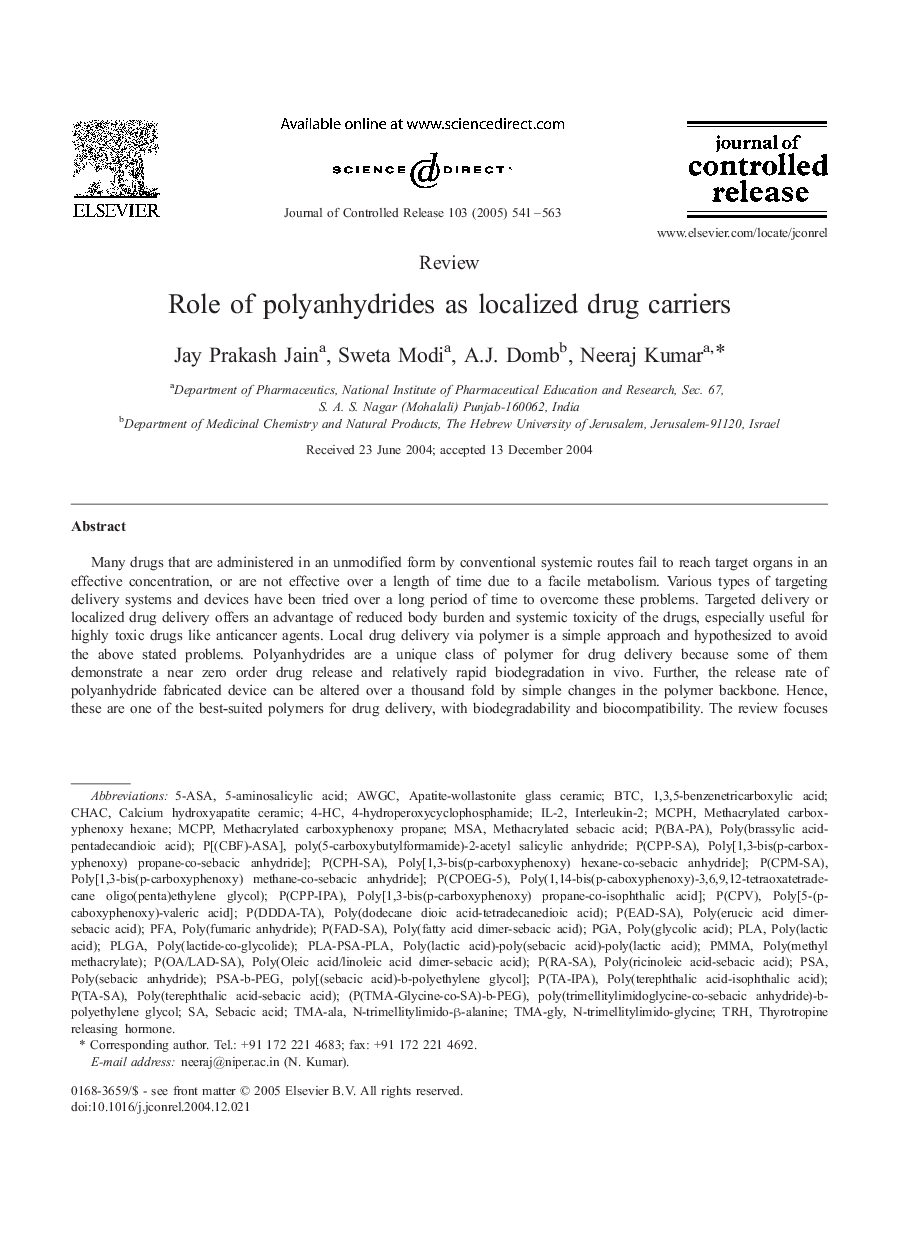| Article ID | Journal | Published Year | Pages | File Type |
|---|---|---|---|---|
| 10613570 | Journal of Controlled Release | 2005 | 23 Pages |
Abstract
Many drugs that are administered in an unmodified form by conventional systemic routes fail to reach target organs in an effective concentration, or are not effective over a length of time due to a facile metabolism. Various types of targeting delivery systems and devices have been tried over a long period of time to overcome these problems. Targeted delivery or localized drug delivery offers an advantage of reduced body burden and systemic toxicity of the drugs, especially useful for highly toxic drugs like anticancer agents. Local drug delivery via polymer is a simple approach and hypothesized to avoid the above stated problems. Polyanhydrides are a unique class of polymer for drug delivery because some of them demonstrate a near zero order drug release and relatively rapid biodegradation in vivo. Further, the release rate of polyanhydride fabricated device can be altered over a thousand fold by simple changes in the polymer backbone. Hence, these are one of the best-suited polymers for drug delivery, with biodegradability and biocompatibility. The review focuses on the advantages of polyanhydride carriers in localized drug delivery along with their degradability behavior, toxicological profile and role in various disease conditions.
Keywords
PLGA4-HC4-hydroperoxycyclophosphamideCHACPoly(sebacic anhydride)MCPH5-ASAIL-2PFABTCMSAPLAmCPPPSAPGA1,3,5-Benzenetricarboxylic acid5-Aminosalicylic acidsebacic acidImplantsInterleukin-2trhLocalized deliveryCancerpoly(glycolic acid)poly(lactide-co-glycolide)Poly(lactic acid)Poly(methyl methacrylate)PMMAPolyanhydridesBiodegradable polymers
Related Topics
Physical Sciences and Engineering
Materials Science
Biomaterials
Authors
Jay Prakash Jain, Sweta Modi, A.J. Domb, Neeraj Kumar,
